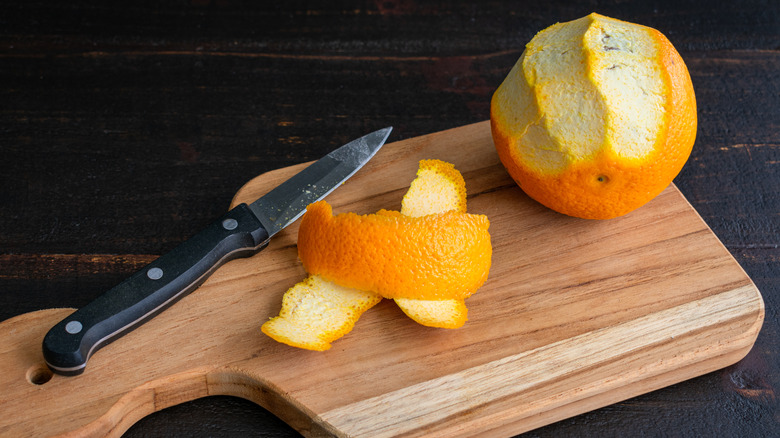The peel of a citrus fruit is incredibly rich in essential oils. These oils are the reason why whenever you cut into the peel of citrus fruits like lemons, limes, and oranges, the room is instantly filled with a sweet, refreshing fragrance. You can bring this zesty fragrance to your dishes or even cocktails by simply grating or cutting the aromatic peel into small bits. While there are specialized tools called zesters to help you with this task, you can also make do with a small paring knife!
When using a knife (or any other zesting tool), the key is to remove as much of the colorful outer layer as possible while avoiding the white membrane underneath. This part is called the pith, and it has a very bitter taste due to the presence of limonin and naringin. To get started, make sure the citrus fruit is clean by rinsing it under running water. Then, slice the fruit in two and put it flesh-side-down on the cutting board. This will give you a more stable surface to work your knife. Position the blade perpendicular to the peel and carefully glide it across the fruit’s skin, shaving off thin slices. Take your time and be gentle, especially if you’re new to the motion. With a bit of practice, you’ll be able to zest it much more quickly!
You can also zest citrus with a vegetable peeler!

Don’t have a paring knife at home? A vegetable peeler works just as well! In fact, it’s the preferred tool for creating long strips of citrus zest to garnish cocktails, soups, and other dishes. Here’s how to do it: Firmly hold the citrus and glide the peeler’s blade down the skin from top to bottom. It’s best to use a freshly sharpened peeler for this task. A dull one might tear the peel or leave too much pith on your citrus zest strips. If you accidentally get a bit of pith stuck to your zest strips, don’t worry. You can easily remove it using a spoon.
Once you’ve peeled the zest, you have two options: either use the strips as they are or further cut them down into smaller bits. Whole citrus zest strips are typically used for garnishing the rim of tropical cocktails — not only for presentation but also to add a lingering, fresh scent to the drink. You can also dice the zest into smaller bits, which is the preferred method for adding zest to dishes as a flavoring or aromatic ingredient.







